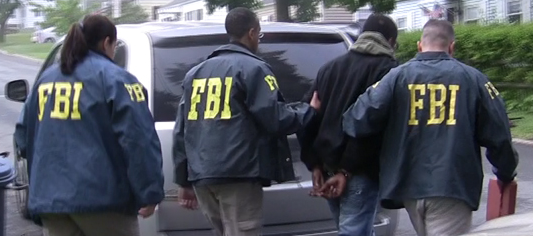Law enforcement officials and leaders of anti-gang programs applauded the enactment of the Project Safe Neighborhoods Grant Program Authorization Act on Monday, saying it will provide much-needed resources toward stopping the recent rise in violent crime around the country.
The bill will also set aside 30 percent of the funding for regional gang task forces, law enforcement entities that coordinate anti-gang measures across state lines.
“We’re very pleased at the release of this additional grant funding. Many of our individual cities will benefit directly,” said Richard Myers, director of the Major Cities Chiefs Police Association, representing law enforcement in the country’s 50 largest cities.
Because gang activity varies widely across America, Myers said it is critical that the Safe Neighborhoods Grants will be managed directly by local and state governments who have the best lead on the threats to their communities. “These types of grant monies will significantly contribute to the ability of local law enforcement to key in on who the greatest threats are and develop the strategies to address them,” he added.
Support for the funding came, in part, from the historic success of the Safe Neighborhoods Program, a 2001 Justice Department initiative that provided block grants toward local, state and community-level programs that proved effective in reducing gun violence and criminal gang activity.
According to a 2013 Michigan State University study funded by the Department of Justice, the cities that saw a high rate of participation in the Safe Neighborhoods program experienced a 13.1 percent decrease in violent crime. Those cities also saw a double-digit reduction in gun crimes and homicides.
Despite documented positive outcomes, funding for the program dried up around 2012 as Congress phased out Safe Neighborhood block grants. In the following years, the Justice Department awarded smaller grants to fewer recipients.
After taking office, Attorney General Jeff Sessions’ pledged to oversee the “reinvigoration” of the original 2001 program in light of rising violent crime and gang activity. Between 2014 and 2016, the FBI documented a 20 percent increase in homicides nationwide. At the same time, street gang membership was on the rise in nearly half of the U.S. jurisdictions surveyed in National Gang Threat Report.
Robert Marker, president of the Mid Atlantic Regional Gang Intelligence Network, is glad to see the grant money return. “The gang issue, it’s grown throughout our country and it affects all aspects of our communities,” he stressed.
Marker said the $50 million grant is “an excellent tool” and “vital” for law enforcement efforts and community-based intervention and prevention programs.
Jay Lanham, the coordinator of the of the Northern Virginia Regional Gang Task Force, is encouraged that Congress and the president reversed the spending cuts. Before Trump signed the Grant Act, his task force had lost virtually all of its funding. The budget for anti-gang programs including enforcement, education, prevention and intervention was slashed from approximately $3 million at its peak to $325,000 this year.
“A lot of the progress we had made we lost because we could no longer afford to have the programs we needed,” Lanham said. As the task force lost its resources, the area saw a surge in violence by the Mara Salvatrucha 13, or MS-13 gang.
“We are considered the hub on the East Coast for MS-13 members,” he noted. “And that’s for us, 98 percent of our work.”
The bill signed into law on Monday as part of the Trump administration’s crackdown on the MS-13 gang, the only transnational street gang operating in the United States.
According to the FBI, there are approximately 10,000 MS-13 members currently living in the United States who are primarily immigrants from Central America. They are not the largest gang but have been tied to some of the most brutal murders with the greatest number of cases reported in California, Maryland, New York and Virginia.
Rep. Barbara Comstock, R-Va., the original sponsor of the bill, stressed the importance of providing new funding for the gang task forces around the country, particularly in light of the increase in MS-13 gang activity in Virginia.
“We have seen firsthand the good work that gang task forces can do to remove the gang threats in our community,” Comstock said after the bill was approved by the House and Senate earlier this month. “They are an important tool in crime prevention, and this legislation will make sure they have the tools they need to take on violent gangs like MS-13.”
At a time when bipartisanship is in short supply in Washington, the Safe Neighborhoods Grant Act was passed 394 to 13 in the House and approved in the Senate by a unanimous voice vote.
Currently, the FBI leads 170 Violent Gang Safe Streets Task Forces, which will be eligible for $15 million in Safe Neighborhoods grants beginning in 2019.
The increased funds will not only help police and law enforcement officials take down violent gangs like MS-13, local governments will also have the resources to invest in community outreach programs. Lanham stressed these community-oriented programs are critical.
“We have a large number of unaccompanied minors in the area and they are very vulnerable to these gangs recruiting them,” he said. MS-13 habitually targets young immigrants, often forcing them into the gang through threats and intimidation.
“If I had my way, I’d spend the bulk of the money on intervention, prevention efforts,” Lanham added, “because it’s much cheaper to go that route and prevent them from joining the gangs than arrest your way out, which we’re not going to do.”
While MS-13 gang activity is a growing concern for certain parts of the country, other areas expect to see significant benefits in combating gang-related homicides and gun violence.
Omaha does not have the many national or internationally-affiliated gangs, said Ryan Spohn, director of the Nebraska Center for Justice Research, but gang violence accounts for roughly 80 percent of the area’s homicides.
“The amount of money should really assist in the coordination of local and federal law enforcement to target the worst of the worst using the best science we have,” he said.
One of the primary goals of the Safe Neighborhoods program is to improve coordination and information sharing between local, state and federal law enforcement. That includes getting communities the resources they need to connect through the national gun-tracing database and the Gang Intelligence Center.
“I think one of the most important things is providing the money for those systems,” Spohn stressed. Having access to national databases will help local jurisdictions more effectively identify and track the movement of firearms and violent criminals traveling across state lines.
After the Sept. 11, 2001, terrorist attacks, local, state and federal law enforcement improved the degree of coordination and communication like never before. However, there are still some communities that are not fully aware of the resources that are available, Myer explained.
“This grant is a renewed effort to fully acquaint local agencies with the full array of resources available from the federal partners,” he said. It is also an opportunity to share best practices across cities and regions.
Ultimately, $50 million per year will only go so far in ensuring law enforcement agencies are up to the task of combating a growing threat of gang and gun violence. “Longterm, that kind of funding isn’t going to sustain the kind of concentrated effort on reducing violent street crime that we need,” Myers said. “But these things have to evolve and this is a great start.”
On Sept. 17, law enforcement agencies around the world will raise the profile of gang violence and community strategies to address the threat on International Gang Awareness Day.






